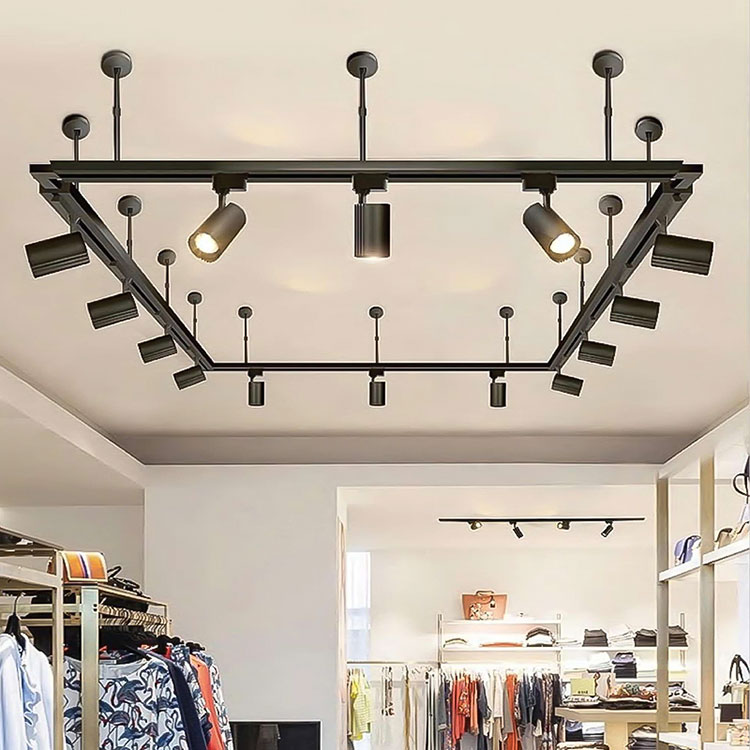How to Use Track Lighting to Transform Your Space
2024-12-21
Lighting plays a pivotal role in shaping the look and feel of a room. Whether you’re designing a cozy living area, a functional kitchen, or a professional workspace, the right lighting can make all the difference. Track lighting, with its flexibility and contemporary appeal, has become a go-to choice for transforming spaces. In this blog, we’ll discuss how to effectively use track lighting to elevate your home or business environment.

What Makes Track Lighting Unique?
Track lighting consists of a track that houses electrical wiring and serves as a mounting platform for multiple light fixtures. Unlike fixed lighting options, track lighting offers adjustable fixtures that can be repositioned along the track or angled to provide targeted illumination. This flexibility allows it to adapt to changing needs and design preferences.
Transforming Spaces with Track Lighting
1. Highlighting Key Features
- Use track lighting to draw attention to architectural details, artwork, or decorative elements. By positioning lights strategically, you can create dramatic effects that enhance the visual appeal of your space.
Example: In a living room, direct track lights toward a gallery wall to showcase artwork or family photos.
2. Zoning Open-Plan Areas
- In open-plan layouts, track lighting can help define different zones. For instance, in a combined kitchen and dining area, use one track to illuminate the cooking space and another to highlight the dining table.
Tip: Use dimmable track lighting to adjust the mood for different activities, such as preparing meals or hosting a dinner party.
3. Enhancing Task Efficiency
- Track lighting is an excellent choice for task-oriented areas. In a home office, adjustable track lights can provide focused illumination for your desk, making it easier to work efficiently.
Example: In the kitchen, direct track lights onto countertops and prep areas for optimal visibility while cooking.
4. Creating Ambient Lighting
- By angling track lights upward or diffusing their output, you can create soft ambient lighting that fills the room. This approach works well in living rooms or bedrooms for a cozy and inviting atmosphere.
Design Tips for Track Lighting
1. Choose the Right Layout
- Consider the shape of your room and the placement of furniture when deciding on a track lighting layout. Linear tracks work well in rectangular spaces, while curved or flexible tracks are ideal for unconventional layouts.
2. Mix and Match Light Fixtures
- Many track systems allow you to combine different fixture styles, such as spotlights, pendants, and floodlights. Mixing fixtures adds visual interest and allows you to cater to diverse lighting needs.
3. Experiment with Color Temperature
- The color temperature of your bulbs can significantly impact the atmosphere. Use warm white (2700K-3000K) for living spaces and cool white (4000K-5000K) for work areas.
4. Consider Ceiling Height
- Track lighting is especially effective in spaces with high ceilings, as it allows light to be directed downward without losing intensity.
5. Layer Your Lighting
- Combine track lighting with other types of lighting, such as wall sconces, floor lamps, or recessed lights, to create a layered and dynamic lighting scheme.
Advantages of Track Lighting
- Flexibility: Easily adjust the fixtures to meet changing needs or preferences.
- Space-Saving: Track lighting is ceiling-mounted, freeing up valuable floor and wall space.
- Modern Aesthetic: Its sleek and minimalist design complements contemporary interiors.
- Energy Efficiency: LED-compatible track lighting systems reduce energy consumption and costs.
Conclusion
Track lighting is more than just a functional lighting solution; it’s a design tool that can transform the way a space looks and feels. Whether you’re looking to highlight a feature, define zones, or create a specific mood, track lighting offers the versatility and style needed to achieve your vision. With endless customization options and practical benefits, track lighting is an investment that pays off in both aesthetics and utility.


